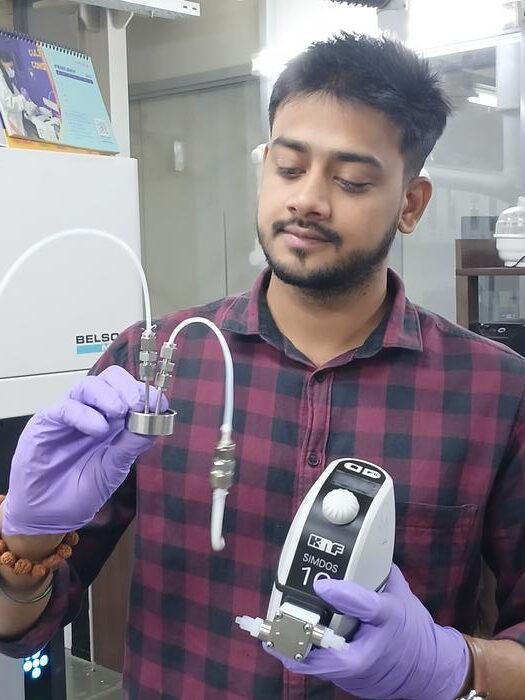Catalytic processes are of paramount importance in numerous industrial applications, particularly in the synthesis of pharmaceuticals, polymers, and other valuable materials. Catalysts, substances that accelerate chemical reactions without being consumed, are integral to achieving efficiency in these processes. However, the effectiveness of catalysts varies considerably, prompting ongoing research aimed at enhancing their performance. In the scope of this research, a pivotal distinction is made between homogeneous and heterogeneous catalysts. Homogeneous catalysts operate within the same phase as the reactants and products, making separation a convoluted process. Alternatively, heterogeneous catalysts, which exist in a distinct phase from the reactants, present a significant advantage in terms of ease of separation and reusability, making them the preferred choice in industrial platforms.
Recent advancements in material science have led to the development of porous heterogeneous catalysts, which offer an innovative approach to increasing both catalytic activity and reusability. These catalysts not only provide physical space for reactants to interact but also enhance the overall density of active catalytic sites, a critical parameter for reaction efficiency. Researchers from Ritesh Haldar’s group at the Tata Institute of Fundamental Research (TIFR) in Hyderabad are at the forefront of this emerging field. Their innovative contributions include the integration of a porous heterogeneous thin film into a cutting-edge cross-flow microfluidic system, an experimental setup that promises to revolutionize catalytic reactions.
This microfluidic configuration is a marvel in itself, allowing precise control over fluid dynamics at the microscale. In this setup, reactants are introduced through an inlet, where they come into contact with the immobilized catalytic thin films. The design facilitates the continuous flow of products out of the outlet, establishing a cyclical reaction environment that maximizes efficiency. The groundbreaking aspect of this microfluidic design lies in its potential for repeated catalytic cycles. If a single cycle yields a mere 25% conversion of reactants to products, the system is designed in such a way that multiple cycles can amplify this conversion, leading to a significant overall increase in reaction efficiency.
Moreover, the mastery of diffusion rates within this system is touted as one of the standout features. Higher control over reactant diffusion not only accelerates the interaction with catalytic sites but also ensures optimal conditions for reaction progression, resulting in faster and more effective chemical transformations. This design represents a significant leap forward from existing methodologies, which often struggle with limitations related to reaction speeds and catalytic efficacy.
To demonstrate the effectiveness of their cross-flow microfluidic system, Haldar’s research team conducted an experimental study involving a base-catalyzed Knoevenagel condensation reaction. Their results yielded an astonishing turnover frequency (TOF) exceeding 4000 h⁻¹. Turnover frequency is a critical measure used to assess the performance of a catalyst, reflecting how effectively it converts reactants into products over time relative to its mass. The remarkable TOF achieved in this investigation highlights the profound impact of enhanced reactant diffusion rates and efficient immobilization of catalysts on reaction outcomes.
Haldar’s innovative approach is not limited to mere academic inquiry. The implications of their findings could lead to widespread industrial applications, particularly in enhancing the efficiency of drug synthesis processes critical to pharmaceuticals. However, while their current methodology is focused on catalyst thin films and liquid-phase organic reactions, the research team has ambitious plans for expansion. Upcoming investigations will explore the adaptation of this technology for gas-phase reactions, as well as large-scale chemical processes, significantly broadening the applicability of their discoveries.
To this end, the utilization of microfluidic systems offers compelling advantages not only in reaction efficiency but also in sustainability and resource management. The prospect of significantly reducing catalyst waste while maintaining high throughput is a boon for environmentally-conscious industrial practices. As with all technological advancements, the journey is paved with rigorous experimental design and validation, which the research team at TIFR is well-equipped to navigate. By bridging gaps between academic research and industrial application, Haldar’s group is setting the stage for transformative developments in catalysis.
What makes this research especially appealing is the multidimensional character of the advances. The interplay between material science, chemical engineering, and reaction kinetics provides a rich tapestry for exploration and innovation. By engaging with the challenges inherent in catalysis, teams like Haldar’s are not only pioneering new methodologies but are also inspiring upcoming generations of scientists to think creatively about solving complex problems.
The impact of catalytic innovations, underscored by Haldar’s research, extends well beyond the laboratory. As industries continually seek more efficient and cost-effective methods of production, breakthroughs in catalysis could lead to lower energy consumption and reduced environmental impact. This alignment with sustainable development goals makes the research even more relevant in today’s society, positioning catalysis as a key player in the quest for eco-friendly industrial practices.
As the world progresses towards increasingly complex chemical manufacturing needs, innovative technologies that enhance catalytic reactions will play an essential role. Ritesh Haldar’s work at TIFR is a testament to the potential of interdisciplinary research to resolve pressing challenges in the field of catalysis. With a foundation of rigorous scientific inquiry and a vision for practical solutions, Haldar’s team exemplifies the frontiers of modern research, promising a future where catalytic processes are faster, cleaner, and more sustainable than ever before.
In conclusion, the rich potential of Ritesh Haldar’s innovative concepts in cross-flow microfluidic technology highlights a transformative moment in the realm of heterogeneous catalysis. It signifies not just an incremental progression in the scientific domain but a fundamental shift towards more effective, efficient, and sustainable chemical production practices.
Subject of Research: Integration of porous heterogeneous thin films in microfluidic systems for enhanced catalytic efficiency.
Article Title: Diffusion-programmed catalysis in nanoporous material.
News Publication Date: 3-Feb-2025.
Web References: DOI Link
References: Nature Communications.
Image Credits: Rajarshi Ghosh, Ritesh Haldar’s Lab.
Keywords
Catalysis, Heterogeneous Catalysts, Microfluidics, Reaction Efficiency, Turnover Frequency, Sustainable Chemistry, Porous Materials, Drug Synthesis, Chemical Engineering.
Tags: active catalytic sites enhancementcatalysis research advancementscatalyst reusability innovationsheterogeneous vs homogeneous catalystsindustrial applications of catalystsinnovative catalyst techniquesmaterial science in catalysispharmaceutical synthesis catalystspolymers and catalytic processesporous thin-film catalystsreaction efficiency in catalysisTIFR Hyderabad research





